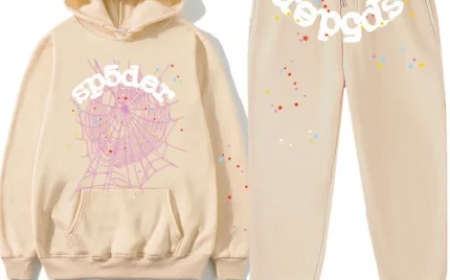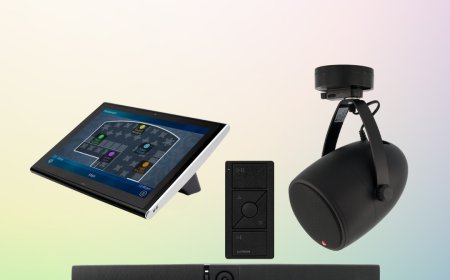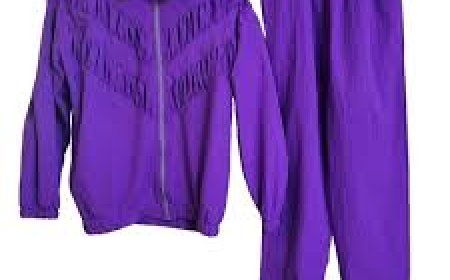Fashion Icons of the 21st Century
Fashion is more than just clothing; its a statement, a mood, and an identity. In the 21st century, a new crop of style influencers have emergedindividuals whose personal aesthetics and approaches to dressing have left undeniable imprints on global fashion culture. From runway tastemakers to street-style stars, these icons mix creativity with influence, shaping how we express ourselves through clothes. In this exploration, we'll dive into ten standout fashion icons of our era, exploring their signature looks, cultural impact, and why their styles resonate so profoundly in the modern world. Fall in love with fashion all over againdiscover how each of them pushed boundaries and inspired millions just like a refreshing dose ofFresh Love.
1. Rihanna: The Bold Visionary
Rihanna burst onto the music scene in the mid-2000s, but its her fearless approach to fashionon and off stagethat has solidified her place among 21st-century icons. Whether shes rocking a glamorous couture gown at the Met Gala or donning streetwear with unapologetic edge, Rihannas style is unstoppable. Shes not afraid to experiment with bold color combinations, unexpected silhouettes, and gender-fluid designs. Her Fenty fashion and beauty empire also reflect her inclusive, body-positive ethos, making her a force of empowerment and trendsetting.
2. Harry Styles: Redefining Masculine Elegance
Harry Styles has ushered in a new era of masculine fashion. With his penchant for silk scarves, high-waisted trousers, flared pants, and painted nails, he challenges conventional gender norms in dress. He blends vintage referenceslike 1970s glam rockwith modern tailoring, often collaborating with Gucci and other luxury houses. Styless style doesnt just turn heads; it sparks conversations about expression and identity. He stands as a compelling example of how celebrity can alter the shape of societal fashion norms.
3. Zendaya: The Chameleon of Couture
Actress and producer Zendaya has become synonymous with red?carpet transformation. Whether appearing in a vintage-inspired ball gown or a sleek minimalist suit, she disappears into the character she embodies that night. Collaborating with stylist Law Roach, Zendaya pushes boundaries with daring silhouettes and statement textures, often showcasing new designers. Her fearless use of color, architectural cuts, and hair transformations make every appearance a cultural touchstone.
4. A$AP Rocky: Streetwear Royalty
A$AP Rocky exploded onto the fashion radar with his East Coast hip?hop roots and eclectic taste. His signature layering, fascination with luxury woven into streetwear, and refined prep influences speak to his multifaceted style sensibility. Rocky has fronted campaigns for Dior and Gucci, starred in fashion glossies, and launched his own fashion line, AWGE. His look is a study in contradiction: tough yet polished, high-end yet laid-backa true stylistic ambassador for a new generation.
5. Billie Eilish: Neon-Green Nonconformity
From the beginning, Billie Eilish rejected pops normcore. Her oversized tees, baggy pants, neon green roots, and maximalist accessories immediately set her apart. She wears her anti?body?image stance on her sleeve, keeping clothes loose and comfortablean ongoing rejection of objectification. Eilishs look has become a cultural statement for the youth: your body is not your brand, your comfort and your self-definition are what matter most.
6. Timothe Chalamet: Provocative Elegance
Timothe Chalamet redefined menswear on the red carpet. With banks of ruffles, velvet blazers, leather harnesses, and non-traditional footwear, Chalamet doesnt shy from risk. He often plays with proportions and textures, pairing slacks with feminine detailing or tuxedos with bare feet. His boundary?pushing outfits reflect a generation unafraid to riff on classic glamoursometimes androgynous, often experimental, always elegant.
7. Virgil Abloh (2021): The Disrupter in Designer Streetwear
As artistic director of Louis Vuittons menswear and founder of Off?White, the late Virgil Abloh transformed streetwear into high fashion. His signature quotation marks, zip ties, and crossed?out logos created a visual lexicon that blurred luxury with street culture. Abloh collaborated with Nike, IKEA, and IKEA, forever shifting how sneakers, logos, and everyday goods are perceived. He also mentored a wave of young designers, extending his influence well beyond his own collections.
8. Rihanna (again): Savage X Fenty & Inclusive Culture
Rihannas influence extends beyond her personal styleit permeates her fashion brands. Savage X Fenty revolutionized lingerie by offering inclusive sizing, featuring diverse models, and creating theatrical runway shows that felt like pop concerts. By highlighting bodies of all kinds, this brand became a cultural moment: fashion with purpose. Rihanna uses her platform to push fashion toward equity, reminding the industry that style should never exclude.
9. Zendaya (again): Daring Meets Activism
Zendayas influence runs the gamutfrom the clothes she wears to the causes she supports. Shes not just a style muse; she uses the red carpet to draw attention to mental health topics, representation in Hollywood, and social justice. Every look is purposeful: politically aware and artistically striking. She consistently prioritizes Black designers and queer talent, making her style both glamorous and socially resonant.
10. Bella Hadid: Supermodel of the Moment
Bella Hadid carries the torch of '90s supermodel cool into the 21st century. Her off-duty stylemixing vintage tees, combat boots, mini-bags, mesh tops, and tailored jacketshas shaped current high-fashion street style. She pivots seamlessly between avant-garde runway looks and relaxed, effortless streetwear, becoming a go-to muse for photographers and designers alike. Her influence on crop tops, low-rise pans, and athleisure echoes across platforms like TikTok and Instagram.
11. Solange Knowles: Afrocentric Avant-Garde
Solanges fashion journey is as layered as her music. She uses geometric prints, sculptural silhouettes, and vibrant Afrocentric colors to craft a style language rooted in cultural pride and experimental artistry. She avoids the glare of mainstream fashion but exerts profound creative power through collaborations with Iris van Herpen, Rick Owens, and smaller Black designers. Her style feels like performance artthoughtful, political, and visually rich.
12. Megan Thee Stallion: Confidence in Color
Megan Thee Stallion brings unapologetic confidence to the world of pop-rap fashion. Her aesthetic channels bold femininity through form-fitting dresses, vivid colors, bold prints, and high-glam hair and makeup. She personifies empowerment through dress, using fashion to inspire self-love and fearless expression. Her looks reinforce that fashion can be an extension of strengthbold and beautiful all at once.
13. Pharrell Williams: Perpetual Playfulness
Pharrell has always deftly straddled music and fashion. With Billionaire Boys Club and collaborations with Adidas, Louis Vuitton, and G?Star, he created a signature aesthetic of cap-brims, colorful knits, and casual-luxe tailoring. His metaphoric hatslike the viral Vivienne Westwood Buffalospark conversation, and hes long championed gender-neutral dressing and positive cultural messaging. Pharrells style reminds us that fashion can be fun, respectful, and globally inspired.
14. Lady Gaga: Theatrical Avant-Garde
Lady Gagas style is cinematic. From meat dresses to bubble dresses, she continually pushes the envelope of performance art through fashion. She moves seamlessly between provocative ensembles and classical red-carpet glamour. Gagas aesthetic is never predictableand always message-driven. Each bold outfit communicates individuality, inviting viewers to question norms around beauty, identity, and the nature of spectacle.
15. Adwoa Aboah: The Model-Activist
British-Ghanaian model Adwoa Aboah blends raw street style with high fashion. With shaved head, bold brows, colorful statement pieces, and body-positive ethos, she merges London underground influences with haute couture. She founded Gurls Talk, a mental health collective for young women, connecting further in her role as a face of campaigns for Dior Beauty. Her style advocates bravery in conversation and confidence in ones own story.
16. Euphoria Cast (ea. Zendaya, Hunter Schafer): Gen?Z Risk?Takers
The hit show Euphoria brought boundary-breaking makeup and styling to mainstream consciousness. Hunter Schafer, Barbie Ferreira, and Alexa Demie each showcased looks that challenged conventions: fish?net bodysuits with tuxedo jackets, bold makeup paired with dusty glam, and futuristic accessories. Euphorias aesthetic isn't just fashion-forwardits a commentary on digital-age identity, adolescent exploration, and the blurry line between fantasy and reality.
17. Taeyong (NCT): K?Pop Couture
In the realm of K?pop, style is as vital as sound. NCTs Taeyong combines high street and runway looksoversized coats, avant?garde tailoring, statement accessoriesand Instagram-ready charisma. Hes collaborated with Prada, Dior, and Nike, bridging Asian entertainment and global luxury fashion. His look is emblematic of a generation that consumes global trends at breathless speed and expresses them with regional flair.
18. Bella Poarch: TikTok Minimalism
Known for her minimalist co-lab looks and bold TikTok presence, Bella Poarch uses fashion to amplify her creative self-made aesthetic. Her style blends Y2K staples like spaghetti-strap tanks, thin belts, and sleek hairstyles. Though her fame emerged through short-form video, her wardrobe is a nod to nostalgia with a modern twistblended with statement graphic tees and subtle accessories.
19. J Balvin: Latin Fashion Fusion
J Balvin bridges Y2K, modern sportswear, and Latin American vibrance. His collaborations with Nike, Balenciaga, and Louis Vuitton drop limited-edition goods that merge Colombian streetwear cultures with Western luxury. Expect bold prints, neon palettes, and hybrid silhouettesreflecting his respect for heritage and his unstoppable global influence.
20. Willow Smith: Neo?Rock Princess
Willow Smith channels neo-rock energy with cropped hair, leather-mesh combos, platform boots, and assertive accessories. Her look mixes Pan-African prints, punk aesthetics, and modern tailoring. She moves easily between big-budget campaigns (like Miu Miu) and editorial shoots, offering proof that youth culture can be both rebellious and thoughtful.
Why These Icons Matter
1. They Redefined Gender Norms
Harry Styles and Billie Eilish, among others, showcase nonbinary fashion expression. Their embrace of color, texture, silhouette, and self-expression encourages everyone to experiment without judgment.
2. They Blend High and Low
With rising interest in sustainable and street-style cultures, figures like A$AP Rocky and Rihanna prove that the luxury-runway divide is shrinking. They wear thrift-shop finds as easily as couture.
3. They Push Social Narratives
From body positivity to mental health awareness, these icons use their clothing choices to spark dialogue. Solanges Afrocentric prints and Ravens inclusive lingerie are just a few ways fashion can carry meaning beyond looks.
4. They Inspire Creativity
Fashion is cyclicalbut these icons turbocharge the cycle. Their risk-taking invites others to creatively appropriate textures, eras, and cultural references, accelerating trends across platforms like TikTok and Instagram.
5. They Influence Business
Stylists, designers, and brands follow suit. When Zendaya prioritizes emerging designers, or Rihanna launches a diverse cosmetics line, the market shifts. Demand grows for creators and brands that promote realness, representation, and radical styles.
The Future of Fashion Iconography
Looking ahead, fashion icons will likely come from hyper-diverse backgrounds and mediumsonline creators, activists, game streamers, and global mezcaleros. Expect cross-cultural mash-ups, AI-augmented wardrobes, and sustainable couture to gain prominence. Icons will no longer be confined to magazines and runways but will rise out of digital tribes, subcultures, and social movements.
There will also be greater demand for transparencywho made the clothes, how it was made, and what values went into it. The next wave of fashion icons will hold creators accountable, showcase environmental integrity, and champion inclusivity at all levels.
Conclusion
The 21st centurys defining fashion iconsRihanna, Harry Styles, Zendaya, Billie Eilish, and many morehave done more than make statements; they've shaped culture, challenged norms, and made authenticity stylish again. From crossover luxury to street-level activism, from gender-fluid wardrobes to Afrocentric pride, their styles reflect a world that values individuality, representation, and conscious creativity.
As we look to the future, their influence sets a powerful precedent: fashion aint just about looking goodits about who you are, what you believe, and how you show it. The true icons of our time dont just wear clothes; they wear convictions.







































